For those who are serious about woodworking, knowing to spread wood glue properly is essential for achieving high-quality results. Wood glue is an adhesive that helps create strong and lasting bonds between two pieces of wood. It is also used in other carpentry projects and is often the best choice for large joints where screws cannot be used. To ensure that your woodworking project meets the highest standards of quality and strength, it is essential to know to spread wood glue correctly.
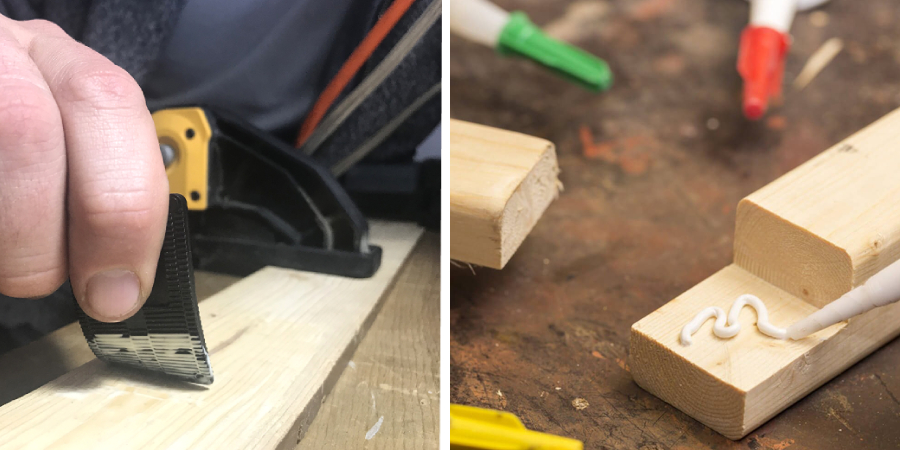
The advantages of spreading wood glue are numerous, but the main one is increased stability. Applying correctly creates an incredibly strong bond between two surfaces that would otherwise remain separated. Additionally, using a thin coat of glue can help to fill small gaps or cracks in a surface which may improve the overall appearance of your project.
Finally, wood glue is relatively inexpensive and easy to use, making it a great choice for do-it-yourself projects. In this blog post, You will learn in detail how to spread wood glue.
Step-by-Step Processes for How to Spread Wood Glue
Step 1: Inspect the Surface
Make sure that you’re working on a clean, dry surface. If the wood is wet or dirty, it won’t adhere to the glue properly. Have your wood glue ready, and ensure you have a spreader of some type, such as an old credit card or putty knife.
Step 2: Apply the Glue
Apply a thin, even coat of glue to the surface using your spreader. Work quickly and make sure you cover all areas. Don’t skimp on the glue, as it needs to be thick enough to hold the pieces together during clamping. Place the pieces you’re gluing together and firmly clamp them. Make sure they are lined up properly and that all surfaces are flush. Take your time with this to make sure everything is even.
Step 3: Wait for the Glue to Dry
Leave the clamps in place until the glue has fully dried. Most wood glues dry quickly, and you can usually move on to the next step in a few hours. The glue could take longer to dry if it’s a particularly wet day or cold weather. Once the glue is completely dry, it is time to take off the clamps. Take your time to make sure the pieces are still lined up and flush before removing the clamps.
Step 4: Clean Up Excess Glue
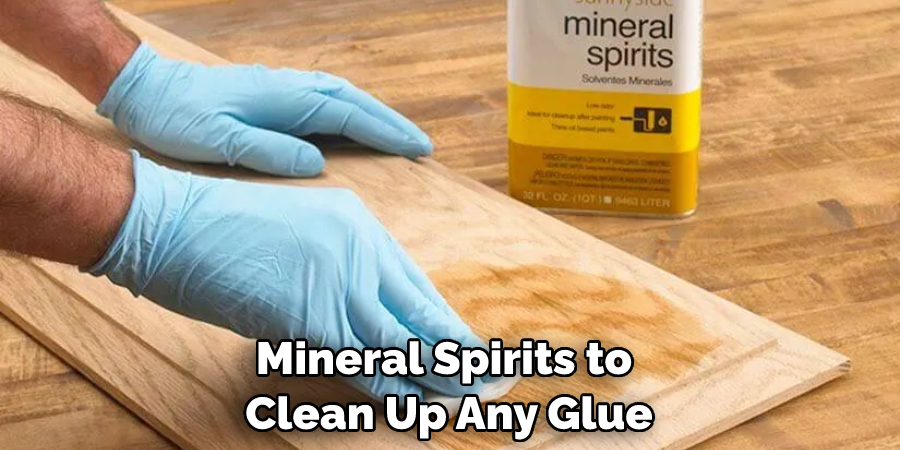
Once all the clamps have been removed, inspect the pieces for any excess glue that may have seeped out of joints or between the two surfaces. Use a cloth wet with mineral spirits to clean up any glue that may have seeped out.
Once the glue is completely dry and all excess has been removed, you can begin to sand down the joints. Use a piece of fine-grit sandpaper or a file to create an even surface. Ensure there are no gaps between the two pieces and all edges are flush.
Step 5: Apply Finish
Once you have sanded the glue joints, it’s time to apply a finish. This can be anything from a stain or paint to polyurethane. Make sure you follow the instructions on the product for best results. Allow the finish to dry completely before handling or moving the pieces. Read the directions on your product carefully, as this could take anywhere from a few hours to a few days, depending on what you are using.
Step 6: Enjoy Your Creation
Your project is complete, and you can now enjoy the finished product. You should now have a strong bond between your two pieces of wood that should last for years to come. By following these steps, you will have no problems when it comes to spreading wood glue. Just ensure you take your time and inspect each step as you go along to ensure a lasting strong bond.
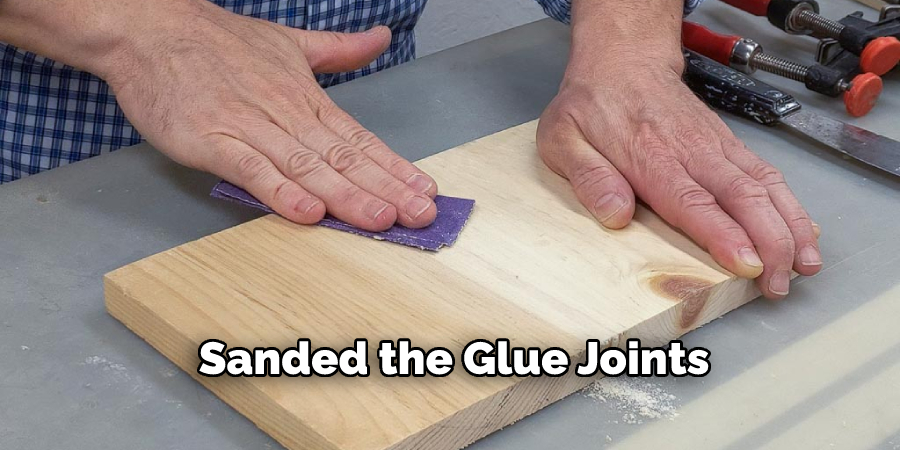
Safety Precautions for How to Spread Wood Glue
- Wear protective equipment such as gloves, goggles, and a respirator mask when handling wood glue to protect yourself from the potential hazards associated with inhalation and contact.
- Always read the label of the wood glue container for safety information before you begin your project.
- Ensure that you are working in a well-ventilated area, as wood glue can emit fumes that can be hazardous if inhaled.
- Use a brush or spatula to spread the wood glue evenly on the surfaces of your project. Avoid using your fingers or hands to spread the wood glue as it may cause skin irritation and burns.
- Always use a damp sponge to wipe away excess wood glue from your project, as the wood glue can damage finished surfaces.
- Store wood glue away from children in a cool and dry place.
- Dispose of any unused wood glue according to the manufacturer’s instructions or local regulations.
- If you experience skin irritation or respiratory difficulties after using wood glue, seek medical attention immediately.
Following these safety precautions ensures that your wood glue application process is safe and successful.
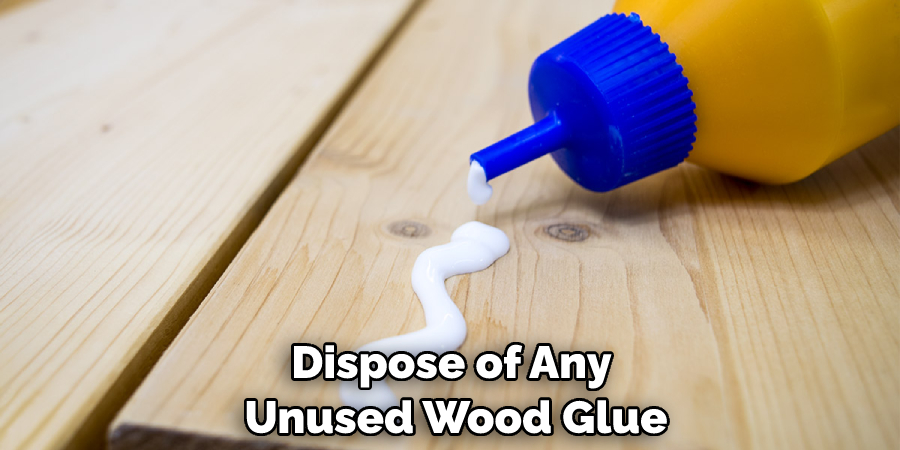
How Should You Prepare the Surfaces Before Applying the Wood Glue?
Before applying wood glue to two surfaces, it’s important to ensure the surfaces are properly prepared. Wood should be sanded and free of dirt, dust, grease, or other contaminants that could interfere with the bond.
If you’re gluing a porous material such as wood or paperboard, lightly moisten one surface with water before applying the glue. This will help create a strong bond when the glue dries. Once you have properly prepared the surfaces, they should be ready to receive a coat of wood glue.
You’ll need an applicator such as a brush or spreading tool to apply wood glue. For small areas, it’s best to use a small paintbrush to spread the glue. You can use a putty knife or other spreading tool for larger areas. Before you start, make sure no large clumps of glue could interfere with the bond. You should also avoid applying too much glue, which can weaken the bond and cause warping.
Is There Anything You Should Avoid Doing When Using Wood Glue?
When using wood glue, there are a few important steps to follow to get the best results. However, there are also some specific things you should avoid doing when applying wood glue:
- Don’t Use Too Much Glue: Wood glue is usually applied in thin amounts so that the pieces of wood can fit together seamlessly and tightly. Applying too much glue can cause the wood pieces to be ‘glued down’ and unable to move, which might lead to cracking or other damage.
- Don’t Spread the Glue Unevenly: Make sure that you are spreading the wood glue evenly across both surfaces of the wood so that it adheres evenly and properly. If the glue is unevenly applied, it can leave gaps between wood pieces or cause weak spots.
- Don’t Use Expired Glue: Always check the expiration date on the wood glue before using it, as old or expired wood glue may not work correctly and could lead to poor results when gluing.
- Don’t Attempt to Reposition Wood Pieces: Once the wood glue is applied and the pieces are together, it is important not to move them around as the glue needs time to dry correctly. Moving the pieces of wood can cause gaps or unevenness, which will weaken the bond of the glue.
By following these tips and avoiding these common mistakes when using wood glue, you can ensure that your project turns out the best it possibly can.
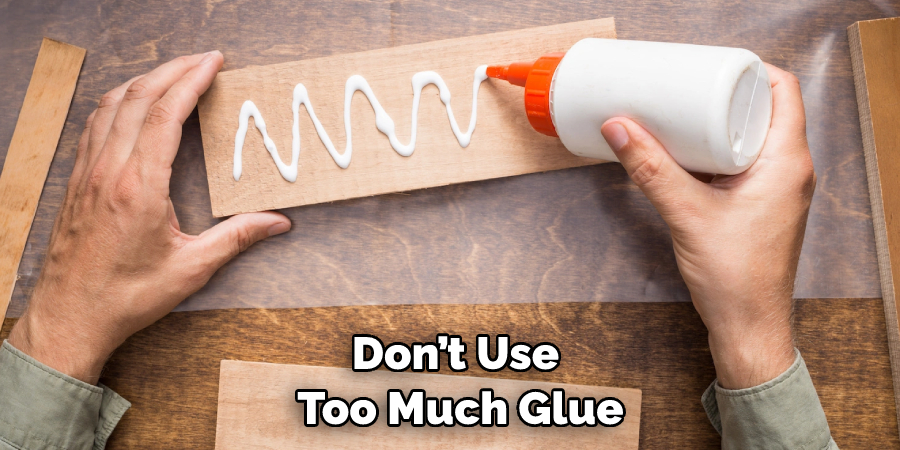
Is There Any Special Cleaning That Needs to Be Done After Using Wood Glue?
Once you have finished spreading the wood glue, cleaning up any excess glue residue is important. Doing so will ensure that the parts stick together properly and will also prevent any potential damage to the wood surfaces. Wood glue can be easily cleaned up with a damp cloth or paper towel. It is especially important to clean up around corners and edges where excess glue may have built up and can affect the fit of your project.
In addition, any leftover glue should also be wiped away from tools and surfaces to avoid potential staining or damage to the wood. This is especially important if you are using a water-based adhesive, as it can cause discoloration if left on for too long. Finally, any dried wood glue should be scraped off with a putty knife or chisel before sanding and finishing.
Can You Store the Unused Portions of Your Wood Glue for Later Use?
If you are working on a project requiring wood glue, you may find yourself with portions left over after completing the task. It’s important to understand that wood glue cannot be stored for long periods of time and reused; however, it can be stored in an airtight container if not used immediately and used again within a few days.
To store the glue properly, first be sure that any excess that may remain on tools such as brushes or scrapers is removed before storage and wiped off with a damp cloth.
Then, tightly seal the bottle of wood glue in an airtight container to keep out moisture, weakening the bond of your adhesive. If stored correctly, wood glue can be reused within a few days.
It is best to use the adhesive as soon as possible for optimal results. When using your stored wood glue, be sure to check the consistency of the product before application. If it has become lumpy or hardened, discard it and purchase a new bottle for better results.
Conclusion
One of the main disadvantages about to spread wood glue is that it can be messy. Wood glue has a thick, sticky consistency, and when it is applied, it tends to run and drip onto the surface, creating a mess. Additionally, if you are not careful, you may end up with excess glue in areas where you don’t want it.
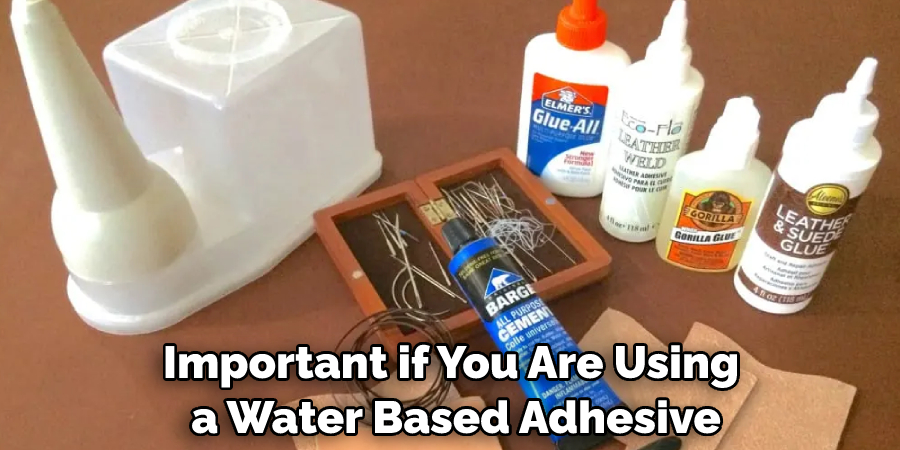
In conclusion, spreading wood glue is a relatively straightforward and simple task, but it pays to take the time to do it properly. Taking care of your application will ensure that you get a strong bond between pieces of wood and that the finished product looks neat and professional.
Start by cleaning any dust or debris from the surfaces of both pieces of wood, then apply an even, thin layer of glue to both surfaces. Take the time to spread the glue with a brush or spatula, covering the entire surface area evenly and avoiding any lumps or gaps. I hope this article has been beneficial for learning how to spread wood glue. Make Sure the precautionary measures are followed chronologically.
You Can Check It Out to Ground a Deck From Static Electricity
